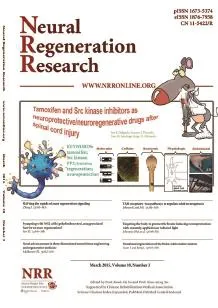基础医学
2015-10-31
基础医学

来源出版物:Neural Regeneration Research,2015,10(3): 385-390
Tamoxifen and Src kinase inhibitors as neuroprotective/neuroregenerative drugs after spinal cord injury
Iris K. Salgado,Aranza I. Torrado,Jose M. Santiago,et al.
Spinal cord injury(SCI)is a devastating condition that produces significant changes in the lifestyle of patients. Many molecular and cellular events are triggered after the initial physical impact to the cord. Two major phases have been described in the field of SCI: an acute phase and late phase. Most of the therapeutic strategies are focused on the late phase because this provides an opportunity to target cellular events like apoptosis,demyelination,scar formation and axonal outgrowth. In this mini-review,we will focus on two agents(tamoxifen and a Src kinase family inhibitor known as PP2)that have been shown in our laboratory to produce neuroprotective(increase cell survival)and/or regenerative(axonal outgrowth)actions. The animal model used in our laboratory is adult female rat(~250 g)with a moderate contusion(12.5 mm)to the spinal cord at the T10 level,using the MASCIS impactor device. Tamoxifen or PP2 was administered by implantation of a 15 mg pellet(Innovative Research of America,Sarasota,FL,USA)or by intraperitoneal injections(1.5 mg/kg,every 3 days),respectively,to produce a long-term effect(28 days). Tamoxifen and the Src kinase inhibitor,PP2,are drugs that in rats with a moderate spinal cord injury promote functional locomotor recovery,increase spared white matter tissue,and stimulate axonal outgrowth. Moreover,tamoxifen reduces the formation of reactive oxygen species. Therefore,these drugs are possibletherapeutic agents that have a neuroprotective/regenerative activity in vertebrates with SCI.
tamoxifen; Src kinase; PP2; trauma; regeneration; neuroprotection
